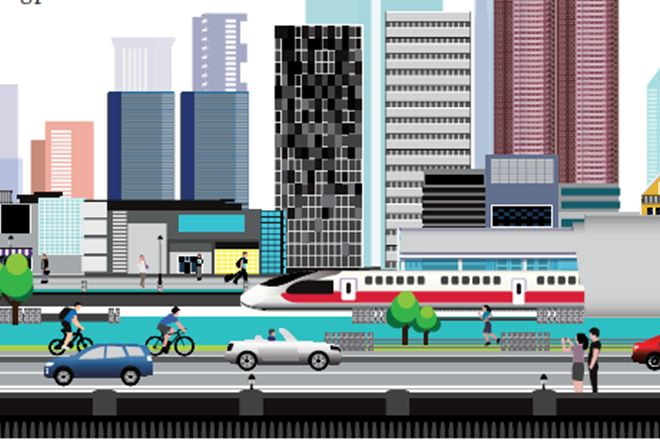

Amidst the talk of people losing jobs, auto sales going down, factories getting shut and a looming slowdown, there is much to despair. However, the fact remains India is still growing at a rate of 5%, which is though below expectations, but still much better than many other countries, when put in the global context. The fundamentals of Indian economy and key drivers of India’s growth story remain largely intact and it seems only a matter of time when we will see all concerns of slowdown getting addressed.
One of the sectors having a strong correlation with GDP growth is real estate. A recently-released report “India 2030: Exploring the Future” by CBRE in partnership with CREDAI puts the real estate sector in focus and while projecting insights about the future, analyses the megatrends shaping this sector and economy. The report talks about the five pillars which will drive growth in the next decade: viz. Demographics, Cities, Real Estate, Climate and Sustainability and Technology. Going beyond the IMF projection and the government’s vision of a $5-trillion economy, the report projects GDP for 2030 at $9 trillion, making India third largest economy in the world. It’s a no brainer that real estate growth and overall economic growth is in a closed feedback loop with one facilitating the other.
Real estate has different facets: residential, office, retail, land etc. with each facet being impacted by megatrends emerging in the economy. Entrepreneurship is one such megatrend. Fueled by digital technology and riding on the demographic dividend, India is moving towards being a startup nation. More than 7000 startups have been incepted during 2013-18, with the startup base growing by 12-15% on an annual basis. This growth will fuel the growth of office spaces which is estimated to grow to a billion sq. ft. by 2030. New models of office spaces are coming up, with co-working space bringing in a new paradigm. WeWork, Innov8 (now acquired by Oyo) and many other companies are flocking on to reap dividend out of this opportunity.
The strengthening retail and E-commerce space will further drive the real estate growth. According to the report, warehousing demand is poised to strengthen with projection to reach 500 mn sq ft by 2030. E-commerce companies adopting an omnichannel approach will further drive this growth. With India emerging as the third-largest consumer market after the US and China, retail shopping centre stock is expected to cross 120 million sq ft by 2030.
The residential space is not to be left behind. Growing urbanization, a workforce dominated by Millennials and Gen-Y, rising urbanization and development of a digital economy are reshaping the residential space. New emerging business models, digitalization narrowing the space of intermediaries are disrupting the ecosystem and leading to new opportunities. Startups like Nest Away, Oyo have entered this space and bringing in innovation, raising quality as well as improving access. A rising middle class will fuel the demand for residential spaces. Out of estimated 386 million households, almost 40% will be urban residents. Affordable housing, an emerging trend supported by the government, will assume more significance with a total of 10 million houses planned to be delivered by 2020 itself under the Pradhan Mantri Awas Yojana (Urban).
In this trajectory of growth, the government will have to play a major role as that of a facilitator and regulator. Initiatives like Smart City, Pradhan Mantri Awas Yojana are driving the growth while regulations like RERA bringing order to the chaos, a method to the madness. The startup India mission is facilitating the entry of more entrepreneurs, thus the growing need for office spaces. The Make In India initiative and eased FDI norms are giving a boost to manufacturing, with companies like Apple entering into manufacturing in India. Growing manufacturing will create more jobs, fuel rising aspirations, and creating more avenues of real estate growth. As recapitalization of banks take place and the NPA crisis recedes, private sector investment will witness further growth.
The real state of real estate might not look encouraging in the very short term, but it’s like investing in mutual funds. While the usual disclaimer applies, the future looks bright in the long term. The best time for real estate is always in future.
[“source=financialexpress”]




